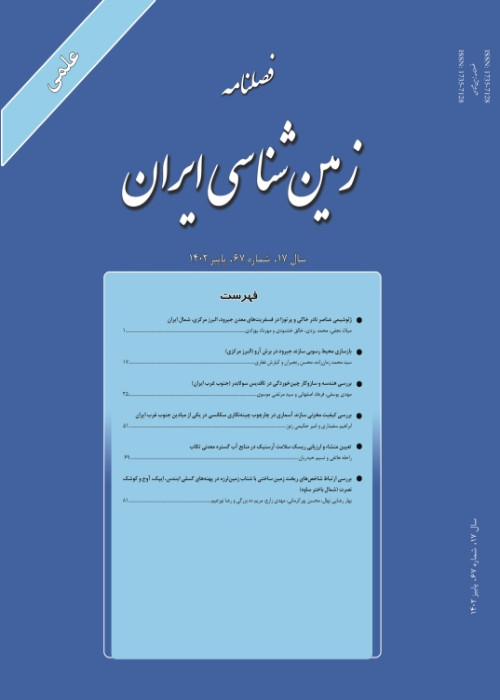The relationships between diagensis, fracture, distribution of matrix porosity, and well productivities in Bangestan reservoir of Ahwaz field
Ahwaz Bangestan reservoir (Ilam and Sarvak formations with approximately 1000 meter thickness) were deposited in the Upper Cretaceous period, which is deposited in different sedimentological and tectonic situations. Ahwaz Bangestan reservoir is divided into four reservoir zones (C-E-G-I) which are separated by zones of dense limestone (A-B-D-F-H). This reservoir is formed due to repeating shallowing upward of shoal-bar to lagoonal facies with distribution of rudist debris, with the exception of younger sequence which belongs to deeper environment. Back shoal facies show frequent depositional changes in vertical and horizontal directions in zones C3-E-F-G-I, the changes which can be seen in reservoir. Furthermore, the effect of basement faults, with trend nearly N-S in Ahwaz Bangestan reservoir, resulted in changes of ancient paleogeography. These changes had an important effect on diagentic changes, depositional setting, and finally productivity in conventional and carbonate fractured reservoirs. Matrix porosity is fabric selective in zones C3-E-G-and I. So, grainstone, and packstone facies have better reservoir quality than wackestone and mudstone facies. Diagensis and meteoric waters affected the top of every exposure cycles, and caused the best reservoir quality in grainstone, and packstone facies and productivity of wells. But, zone C1 of Ahwaz Bangestan reservoir (chalky limestone) experienced dominantly solution and leaching, which caused an increase in matrix porosity, but little changes in permeability. Furthermore, the open fractures developed in zones E, F and G which are located in the central and southern parts of the field. Existence of open fractures are confirmed by mud losses, analysis of sedimentary structure and dynamic reservoir data. Increase of mud losses in some area of limestone zones (D, F, and H) could be an indication of vertical relationship of two reservoirs and absence of sedimentological barrier in these areas.
- حق عضویت دریافتی صرف حمایت از نشریات عضو و نگهداری، تکمیل و توسعه مگیران میشود.
- پرداخت حق اشتراک و دانلود مقالات اجازه بازنشر آن در سایر رسانههای چاپی و دیجیتال را به کاربر نمیدهد.


